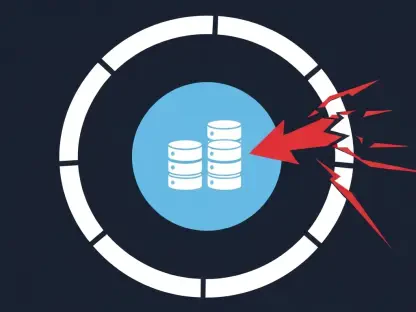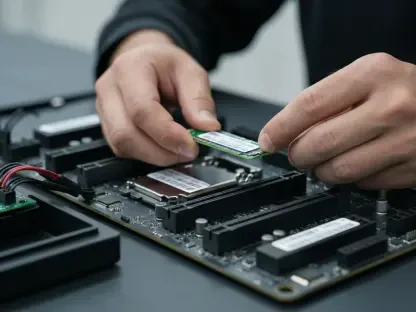Listen to the Article
Technology has paved an ever-evolving road for the business world to journey beyond the norm. In response, employers and customers bring more modern expectations to the table, changing the definition of work-life balance. The emergence of the gig economy rewrote the rules of remote working by empowering the exchange of labor and resources via digital platforms. It champions contractors and freelancers, as opposed to full-time employees, to facilitate the flexibility that today’s workers desire.
However, between rapid turnover and management mishaps, employers quickly opened their eyes to the limitations of their previous approaches. Enter the Gig Economy 2.0—a modern workforce that prioritizes the use of technology to unleash unparalleled flexibility and financial stability for freelance workers.
A New Paradigm of Work
Since 2010, the business landscape has embraced the concept of the on-demand workforce with open arms—with the introduction of transportation platforms like Uber. As technology evolved to make way for artificial intelligence, robotics, and sensors, the workforce was better able to respond to workers’ growing needs for more autonomy and flexibility.
This modern approach enables workers to create a schedule that fits their life circumstances—not the other way around. By doing so, freelancers can attain a greater sense of stability that is unheard of for hourly employees, both occupationally and financially.
As a result, the Gig Economy 2.0 has emerged as an exciting avenue for employees seeking to gain more freedom and control over their professional lives. One way to achieve this goal is by leveraging advanced tech, like blockchain, to help sidestep the strains of the traditional workforce.
Blockchain and Decentralization
The standards for financial transactions, or even legal contracts, necessitate institutions or legal support to ensure pristine execution. Integrating such intermediaries becomes cost-heavy and unreliable—creating a greater need for trust. Ironically, many businesses are responding to this demand through trustless transactions, thanks to the accelerating adoption of blockchain technology.
As the name suggests, this technology groups transactions into blocks and links them together to form a chain using cryptographic methods. This creates an ever-growing ledger maintained by nodes, instead of a central authority. Every transaction is verified via a consensus mechanism like Proof of Work—whereby network participants are required to solve complicated mathematical problems.
This allows for greater data integrity by negating the possibility of editing historical records, boosting both trust and transparency. In line with this, blockchain technology also combats corruption by providing unparalleled accessibility for anyone wanting to access and audit transaction history. Additionally, the blockchain structure serves as a strong foundation for the proliferation of smart contracts for freelancers.
Understanding the Use of Smart Contracts
By serving as a digital agreement that is signed and stored on a blockchain network, smart contracts are a revolutionary technological approach to ensuring all parties fulfil their obligations. Automation plays an important role in powering this innovation, both in how agreements are executed and payments are transferred.
Application 1: Decentralized Finance Apps
Decentralized banking sidesteps the limited time traditional financial systems allocate to deals by cutting out intermediaries and widening accessibility. By using smart contracts, decentralized finance apps like Uniswap enable users to trade assets in place of one central exchange—reducing the chances of being hacked.
Application 2: Supply Chain Management
Through its self-executing capabilities, smart contracts can be applied to entire supply chains. This eliminates the need for regular management by automating shipment schedules and empowering seamless operations. Any variation in this data would activate an immediate re-order and file an insurance claim. As smart contracts allow for greater visibility and stronger integration, this further bolsters supply chain inventory and just-in-time production processes.
Application 3: B2B Data Marketplaces
As a portal for users to buy and sell diverse data streams and sets, data marketplaces leverage smart contracts to support automated transactions securely—and free of third-party interference. Smart contracts also lessen transaction-based resources, making the process more streamlined and efficient.
Bridging the Distance Through Technology
Across the dynamic gig landscape, communication is the key to success, as freelancers need to clearly and concisely exchange information with clients. With the right tools in place, it’s easier to connect freelancers to the rest of the world by bridging gaps between time zones and work styles.
Tool 1: Slack
Initially introduced as an internal solution for online game organizations, Slack has solidified itself as one of the foremost platforms for digital collaboration. This tool serves as an online workspace for freelancers to communicate with fellow team members and clients, with messaging applications that enable swift project updates and a productivity boost of 47%.
Slack also enables integration with other freelancer-friendly software like Google Drive and Office 365 to empower a centralized workflow. By embracing the power of advanced technology like no-code automation, this platform also pulls focus toward high-value work while modernizing tasks and processes.
Tool 2: Mailchimp
As an all-in-one marketing software, freelancers use Mailchimp’s email marketing and management features to create, send, and evaluate campaigns and newsletters on a mass scale. This platform also enables analysis capabilities that bolster audience segmentation, automation, and smart analytics for better performance tracking.
To support freelancer endeavors further, this tool offers a program, named Mailchimp & Co., to provide individual courses on marketing-related topics, like building a website and understanding APIs. This initiative also empowers freelancers through educational resources aimed at expanding their marketing expertise.
Tool 3: Moxie
When it comes to driving comprehensive freelance management and remote team collaboration, Moxie is a one-stop solution that unifies all communication in a centralized platform. To streamline processes, this tool offers a powerful client portal secured by personalized access, effective document management and sharing, as well as task and project management abilities.
Moxie also offers video conferencing capabilities by integrating the market’s top digital face-to-face communication solutions like Zoom. This empowers freelancers to manage every aspect of messaging—from initial pitch meetings to follow-up emails.
Conclusion
The accelerated adoption of technology in the Gig Economy 2.0 is paving the way for freelancers to take more control over their careers—and on their own terms. From blockchain developments to decentralized applications, the new age of working is quickly putting the barriers of the traditional workforce in the rearview mirror as workers drive closer to more flexibility and financial freedom.
More so, software like Slack and Moxie is changing the game for freelancer management and productivity by empowering a globally connected, collaborative, and diverse ecosystem that runs on autonomy and diversity. By embracing these innovative tools, both freelancers and employers can gain peace of mind as the paradigm shifts toward a work environment that knows no bounds.









